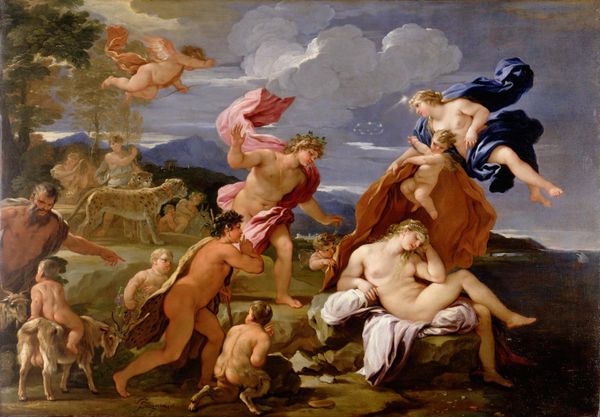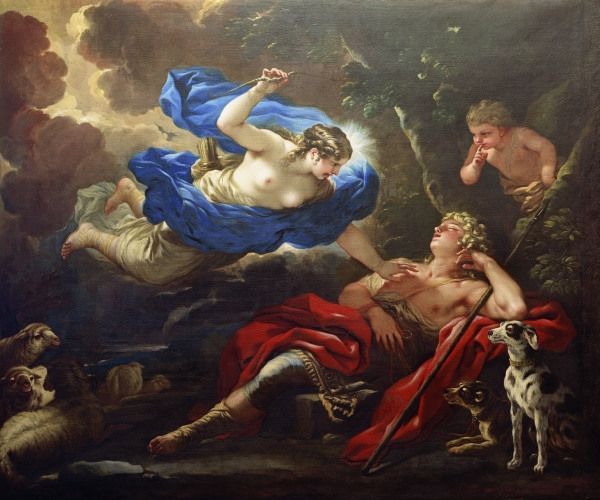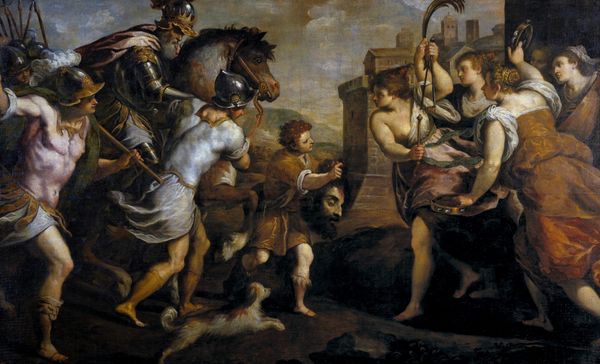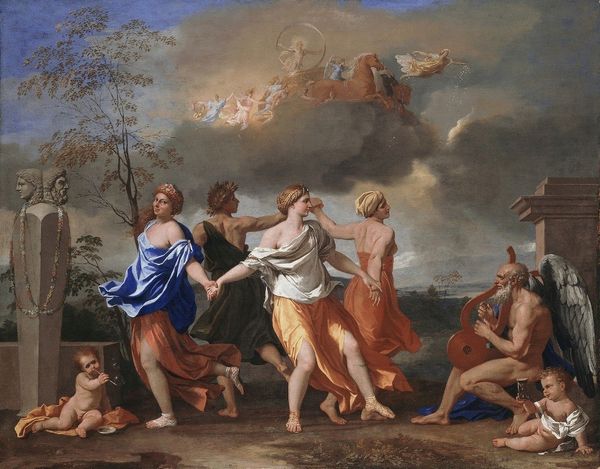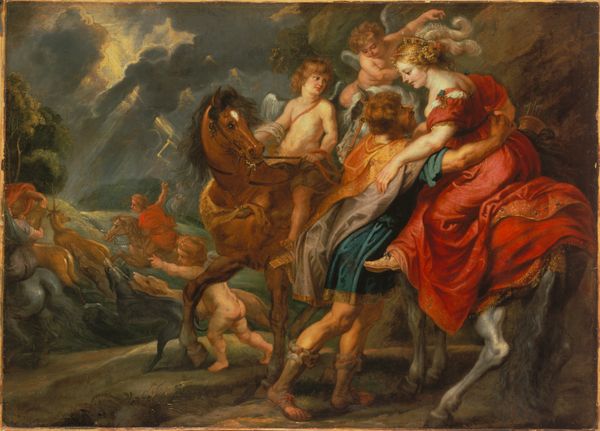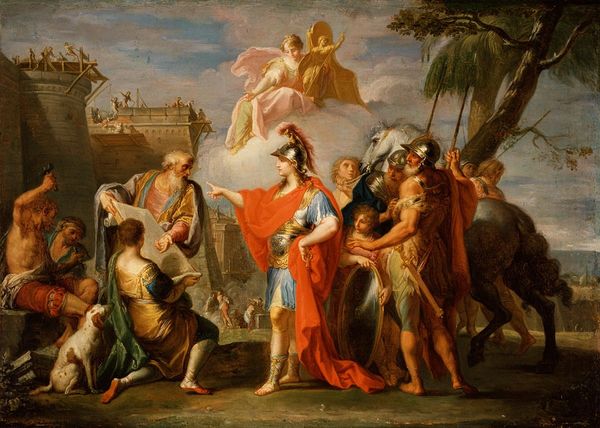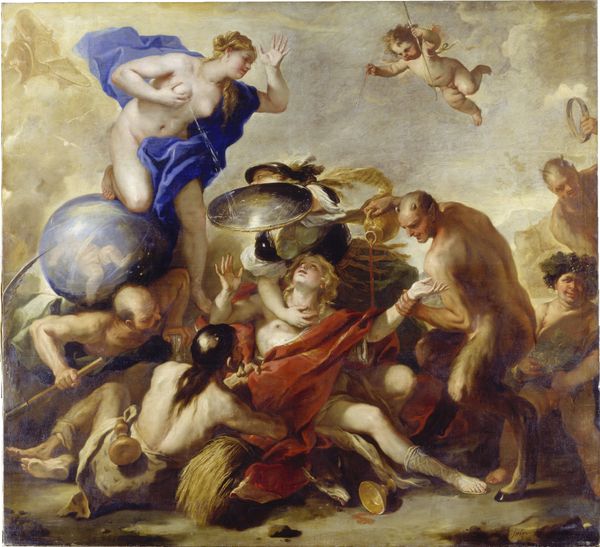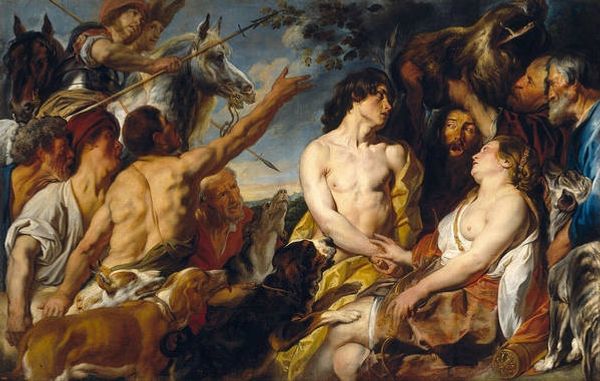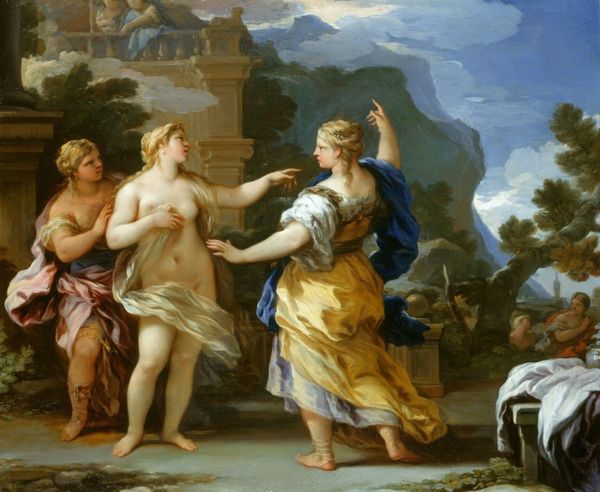
#
abstract painting
#
charcoal drawing
#
possibly oil pastel
#
oil painting
#
roman-mythology
#
neo expressionist
#
acrylic on canvas
#
underpainting
#
mythology
#
painting painterly
#
animal drawing portrait
#
portrait art
Dimensions: 122 x 169 cm
Copyright: Public domain
Curator: Well, hello there! This is quite the dreamy spectacle, isn't it? Nicolas Poussin completed this oil painting titled "Selene and Endymion" in 1630, and it now resides at the Detroit Institute of Arts. What leaps out at you? Editor: That moonlit glow. It's like the whole scene is caught in this eternal twilight, which, given the story, is rather fitting, isn't it? I am compelled to look into its strange details... I’m immediately caught up in the almost absurd, wonderful contrast between that darkness on the right, and the figures that seem lit with golden hour glow. Curator: Indeed! Poussin, deeply influenced by classical antiquity, illustrates the myth of Selene, the moon goddess, and Endymion, the mortal shepherd, destined to eternal sleep. We see how the subject embodies both earthly desires and the promise of transcendence through her visit, the immortal meeting the mortal. It is an incredibly common myth to examine what it is to be human through such a lense. Editor: So, we're talking love, immortality, a bit of surrender…and maybe some eternal regret thrown in for good measure. That dark figure does give me a feeling like she has just drawn back that cloth from what she perhaps wishes would stay hidden... is she the harbinger of death itself? Because if so, it is not nearly as attractive as I was led to believe by folklore. Curator: The historical context sheds light on the painting's patronage as well. These mythological scenes were immensely popular among the intellectual elite in 17th-century Europe. Owning pieces such as these communicated a knowledge of classicism and further suggested to your social group your commitment to this aesthetic of humanism and artistic expression. Editor: Humanism is the love child of art, philosophy, and politics, so I'm unsurprised patrons loved to make sure people knew where they landed on such issues! The funny thing about myths is that they linger with us in perpetuity… they act as guides that keep speaking into the heart of any society. And what's intriguing about Poussin's vision here is how personal it feels amidst that grand mythological staging. It doesn’t come across as didactic as you might imagine, does it? Curator: Absolutely! Looking at it again through your interpretation helps it stand out so much more clearly from the popular style of mythological portrayal during its time. There's definitely something about the intimate details he chose that feels refreshing still. Editor: Fresh then, fresh now! Thank you!
Comments
No comments
Be the first to comment and join the conversation on the ultimate creative platform.
